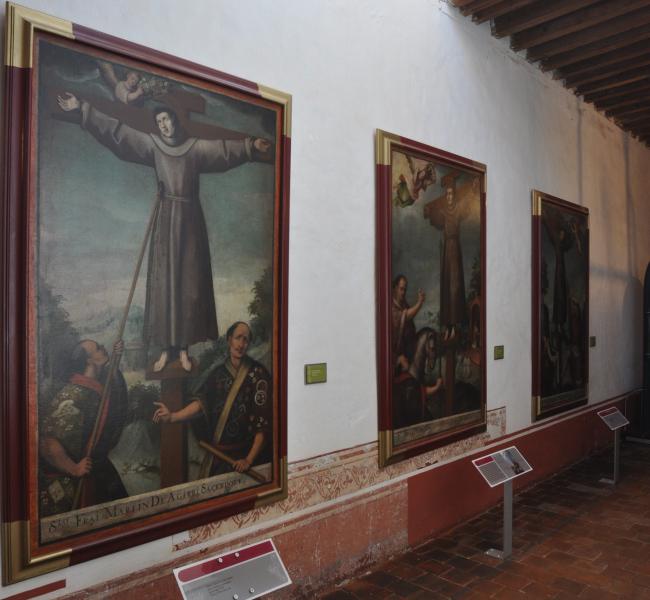
The Martyrs of Japan
Sala
In 1521, the slow process of colonization and Christianization began on the Philippine archipelago, named in honor of Spanish King Philip II when Spain conquered and colonized the Asian region. The Philippines maintained a close trade exchange with New Spain through the Manila Galleon, which sailed from the port of Acapulco to Manila.
Following this route, in 1596, the Spanish ship "San Felipe", traveling from Manila, Philippines to Acapulco, was shipwrecked off the coast of Japan. When the ship's captain, Francisco de Landa, was captured, he was brought before the emperor, Tagcosama, and declared that the Franciscan and Jesuit missionaries were advancing to facilitate the Spanish army's invasion. The ruler's reaction was so strong that he ordered his shogun, Toyotomi Hideyoshi (the general in charge of fighting the barbarians), to arrest three Jesuits, six Franciscans, and 17 Japanese Christians. These individuals were transferred through various towns during the winter, covering 800 kilometers, and were tortured by having one ear cut off as a symbol of humiliation, intended to show the population the punishment for Christian converts. Ultimately, they were bound to a cross and pierced with two crossed spears in Nagasaki in 1597. In 1862, the 26 prisoners were canonized as the "Martyrs of Japan."


